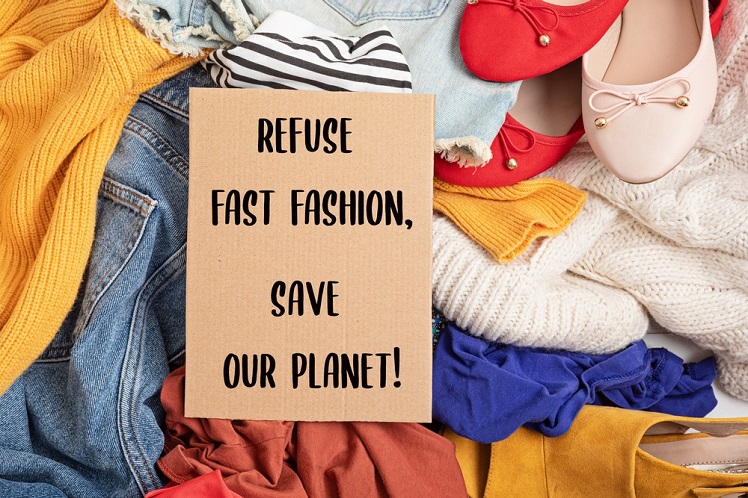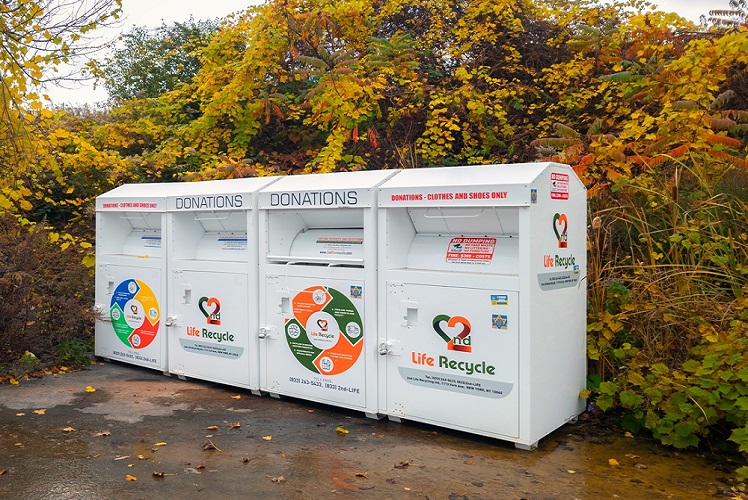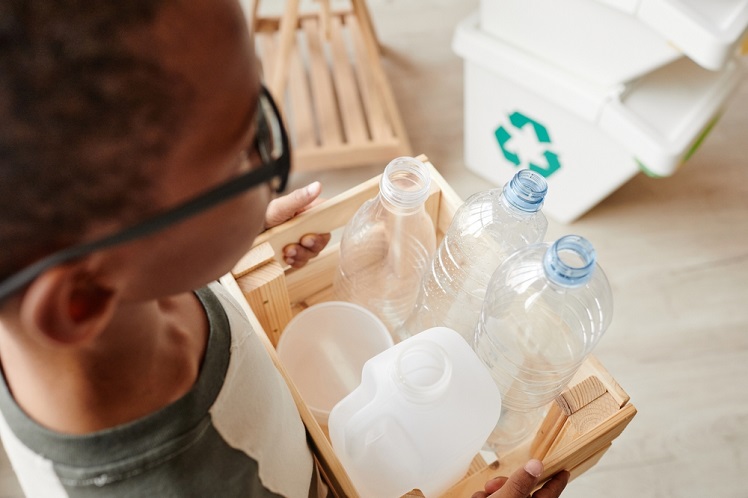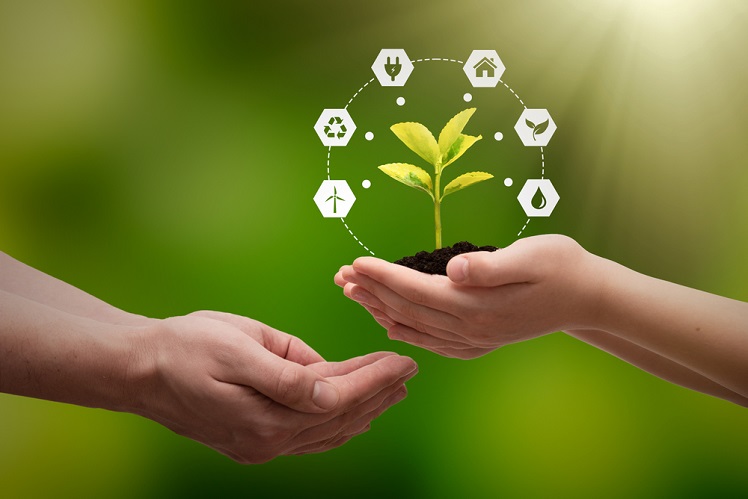To start living sustainably and adopt an eco-friendly lifestyle, focus on reducing your use of plastics, conserving water, minimizing food waste, and choosing sustainable transport and materials.
Plastics have become a vital asset for humanity. It’s the kind of material that sounds borderline–pie–in–sky: durable, flexible, versatile, cheap, and long-lasting. Understandably, we have included it in every facet of our modern lives–carry bags, food wraps, headphones, toothbrushes, etc.
If we’re upfront about it, our total dependency on the plastic makes sense. But when it comes to sustainable living, we need to consider replacing this material with others that are more eco-friendly for the sake of our planet Earth.
And for that reason, we invite you to get acquainted with a sustainable lifestyle before we discuss it further. Starting from discussing the importance of an environmentally friendly life, how to kick off an eco-friendly lifestyle, to the positive impact of this lifestyle.
No more rambling; let’s dive in!
Key Takeaway
- Adopting sustainable living minimizes environmental impact.
- Reducing plastic use is essential for eco-friendliness.
- Conserving water and reducing food waste are key.
- Avoiding fast fashion reduces textile waste.
- Using sustainable materials and transport supports eco-friendly living.
Table of Contents
What Does Sustainable Living Mean?
The trend of an environmentally friendly lifestyle is increasing due to raising awareness of global warming. Based on a survey conducted in 2019, around 77% of respondents from America and Australia are interested in starting an eco-friendly and sustainable lifestyle. As much as it sounds great and promising, we have to know the basic principle of sustainable living.
Hence, we can start this new lifestyle easily. Take a look at several sections below to have more details!
1. What is Sustainable Living?
Currently, the phrase sustainable living is being intensively echoed to reduce the impact of climate change. Or slowing down global warming, to say the least. But what exactly does sustainable living mean?

Philosophically, sustainable living is an effort to live a lifestyle that aims to reduce negative environmental impacts. This can be done by reducing individual carbon footprints, such as reducing plastic use, minimizing food waste, and switching from coal-based fuels to electric.
If you are curious about your carbon footprints, you can calculate them on an app provided by World Wide Fund (WWF) here.
By adopting such a principle, we come to understand that whatever we do will have an impact on the environment. Whether positive or negative influences, it all depends on us. So, how to have a sustainable lifestyle? Check out some examples in the following section.
2. What are Some Examples of Sustainable Living?
If you need clues on what to do to begin a more eco-friendly lifestyle, we have prepared some examples you can do right at home. Feel the difference when you act responsibly towards every action towards the Earth.
Move On From Plastics
Plastics are just like yin and yang. On the one hand, plastics are valuable materials to be included in every aspect of our lives. With plastics, you may have a pan with an insulator that prevents your hands from burning. Or, safely charge your phone without worrying about electrocution.
Unfortunately, they are incredibly harmful to our environment as they can’t be naturally degraded by soil microbes. It will take hundreds or thousands of years to decompose one plastic. So, it’s nearly impossible to treat them all, knowing we have more than 7 BILLION plastic waste globally now. What a number!
Therefore, despite only a small step, switching from plastic to eco-friendly products helps reduce the environmental damage already getting worse. You start slowly changing plastic bags to reusable ones and choose to refill water from home instead of buying bottled water. If you have access to single-use biodegradable products, like cassava bags, you can replace plastics with them.
Reduce Food Waste
Food waste is food that is still edible but discarded in your bin. Statistically, one-third of the total global food is wasted. It accounts for 1.6 billion tonnes, according to the Food And Agriculture Organization (FAO).
Suppose you never finish your meal or throw away fresh fruit and vegetables that are still worth eating. In that case, you contribute to increasing the number of food waste.
To avoid this, we recommend making meal preparation. So, you will only buy what you need to keep it in the refrigerator for a short time. In addition, take food portions according to your body’s capacity. Don’t take so much if you can’t finish it.
Don’t Overuse Water
Based on the United States Environmental Protection Agency (EPA), one family in the US can waste 180 gallons of water per week. This amount is equivalent to the water required for laundry 300 times. Considering this statistic, we could run out of groundwater at any time! Knowing that the source of clean water on our earth is only 3%, the rest comes from the ocean.
Before it’s too late, we can help by not wasting water. Use water as needed. If necessary, buy equipment such as a washing machine or water sprinkler with an automatic system to stop water flow when needed.
Cut Off Fast Fashion
Interested in starting sustainable living, yet you like shopping for new clothes every month? Well, you will definitely be surprised when you know this fact.
By 2030, it is predicted that textile waste will reach 134 million tonnes per year! And fast fashion is one of the biggest contributors to this figure. Americans alone threw away an average of 37 kg of clothes in 2017.

And for that reason, you should consider reducing or even stopping buying fast fashion clothes. Alternatively, you can thrift used clothes that are still like wearing them to reduce waste. They are usually priced at a lower price with still good quality.
Also, declutter old clothes that you can donate to people in need before you buy new things.
3. The Basic Principles Of Sustainability and Green Living
We summarize several key points with the same purpose from various sources that state the differences between sustainable and green living principles. There are four basic principles of sustainable and green living you need to know before adopting this lifestyle. Here they are:
Protecting Wildlife and Ecosystem
The massive use of plastic that will end up in the ocean threatens the survival of marine life. Fishes that ingest the microplastics will die, reducing fishermen’s income. Therefore, it is vital to protect the ecosystem so it can thrive for future generations.
You also indirectly protect community health and well-being since most fish are now contaminated by microplastics that pollute the oceans.
Wise Water Use
Water is a crucial part of our life. For that reason, the wise water use principle in a sustainable lifestyle is important. Little did we know water use management is essential to prevent flooding, improve water waste treatment, and protect springs or groundwater from pollution.
In addition, it is crucial for farming! So, imagine if it doesn’t exist due to the excessive water use now.
Use Sustainable Materials and Transport
This principle relates to the first point. By using sustainable materials, you can reduce the use of single-use products that are potentially harmful to Earth. The transition of transportation from fuel-based to electric ones is also an option for those of you who live a sustainable life.
Although you have to spend extra money, they are generally more durable and efficient.
Reduce Waste and Carbon Footprint
Last but not least, zero waste is one of the main focuses in the basic principles of sustainable and green living. It comes without no reason, as the waste in landfills is now increasingly piling up. So, it is vital to reduce the waste and carbon footprint by buying what you only need.
In addition, purchasing those that are recyclable and reusable must be a priority so that their waste can be processed into more valuable goods.
4. The Example of Sustainable Products
Along with the increasing number of people who want to try a sustainable lifestyle, many products that claim to be eco-friendly and sustainable products appear. Some of the products you can buy to support your new lifestyle are:
- Reusable shopping bags.
- Compostable paper straw.
- Cassava eco-friendly bags.
- Bamboo cutlery.
- Cotton clothes (not synthetic ones).
But remember to check on the manufacturer’s ethics and principles. Choose those with the green triangle symbol for reusable products or any third-party certification to determine whether they are biodegradable or not.
You might also like:
- Green Environment: Its Significance for Mother Earth and Mankind
- 4 Excellent Eco-Friendly Products to Promote a Sustainable Future
- Smart Sustainable Products
- How to Save Mother Earth Before It’s Too Late? (Important Tips)
- Why is There a Growing Need for Ethical Buying of Eco-products?
What is the Difference Between Sustainable and Green Living?
It is understandable that people are confused between sustainable and green living since their goals are similar, which is protecting our planet. But actually, they have different definitions. Sustainability is all aspects of life which goal is not to damage natural resources, such as water, so future generations can experience it.
Meanwhile, green living is more about understanding how to switch to environmentally friendly products and services.

Furthermore, green products may help reduce the impact of environmental damage. However, it does not mean they are sustainable. Take a stainless steel straw as an example. Consumers will perceive using stainless steel straws as an effort to reduce plastic straw waste.
Sadly, the bitter truth hits when you know that their production consumes more energy. In addition, the decomposition process of stainless steel is also not easier than plastic. So, we cannot include them as sustainable products.
But don’t worry! There are still some products that are both sustainable and biodegradable. One example is cassava bags. They can quickly decompose, while manufacturing is easy with less energy than plastics. To know further about sustainable and green products, you must check the company profile to find out their values and principles.
What is the Importance of Sustainable Living?
Following the purpose of sustainable living, having such a lifestyle is essential for mother earth. You may wonder, “does it matter?” because you feel you only do one small thing. But please know that there will be no massive results without your one small step.
Your action can have domino effects in a positive way for your community if you can be an example to try to live sustainably. For example, your neighbors follow if you decide to grow your own foods in your backyard.

It may not look huge, but in fact, such an action contributes in:
- Cutting a chance to buy products at the market, which often wraps in plastics.
- Reduce energy use as most fruits and veggies are stored in the refrigerator at the supermarket.
- Lowering gas emission, which is generally used to transport the foods from a farm up to your plate.
- Help saving budget as they can harvest their own food.
- Growing positive impacts around your community by stimulating a small positive act.
The five elements support the principle of sustainability, which are social, economic, and environmental. So, if you are wondering whether your efforts to live a better life by following a sustainable lifestyle are wasted because of various issues at the government level, you can’t handle them? The answer is NO! You have significant influence, and it matters.
How Do You Transition to Sustainable Living?
We understand that it may be challenging for beginners, especially if no one in the surrounding environment has adopted this lifestyle. So, don’t be in a hurry to immediately switch to a sustainable lifestyle. It is better to take it slowly, but it can last forever!

Here are some tips to start your sustainable and green lifestyle that is friendly to nature:
1. Try To Avoid Private Vehicles
You can ride a bicycle to work or school if the season allows, such as spring and summer. In the winter, taking public transport will be a better option. By doing this, you reduce the use of unsustainable fossil fuels.
2. Prioritize Reusable and Recyclable Materials
As we previously discussed, plastics are noxious. But other materials besides plastics are also non-degradable, such as glass and metal. So, you can shop for goods that are packaged in paper instead of them. Also, avoid buying bottled water. Instead, fill it in your home using your reusable bottle.
3. Buy Food From Local Shops
You may not realize that it takes a lot of energy from production to transport foods to reach consumers. By buying from local markets, you help reduce this supply chain. Thus, reducing emissions indirectly. You can also grow veggies and fruits in your backyard, emphasizing your sustainable lifestyle.
4. Save Water
Everyone wasted around 30 gallons of water per day! To cut this amount, you can begin by reducing your bath duration and avoiding using a bathtub that consumes a lot of water. In addition, buy equipment that has an automatic timer system, such as an automatic dishwasher or lawn sprinkler, to reduce household water use.
How Does Sustainable Living Affect The Environment?
There are many benefits when a community applies sustainable living to a part of its life. In fact, the United Nations Environment Program (UNEP) stated that such a lifestyle could be fresh air for Earth as it is predicted to reduce emissions by up to 70% by 2050.
In addition, it also boosts the local economy as sustainability encourages people to shop from local markets to slash carbon footprint, emissions, and energy that is put during the production to transport.

Moreover, reducing the use of non-degradable materials, such as plastics, is one of the obvious focuses on sustainability. Replacing petroleum-based plastics with eco-friendly cousins, like biodegradable plastics, is the most viable option to save Mother Earth from escalating ecological catastrophes.
Biodegradable plastics are made from all-natural plant-based raw materials. The most versatile base material used in their manufacturing is starch produced by plants.
Aside from a slightly higher production cost, biodegradable plastics hold many advantages over standard plastics, with a lesser impact on the environment being one of its greatest advantages. Among the myriad of advantages offered by Biodegradable plastics include:
1. Reduction in Greenhouse Emission
The manufacturing of biodegradable plastics involves plant based raw materials that cause minimal or no carbon emission during the composting process.
2. Eco-Friendly Disposable Solution
Litter is a problem that causes extreme negative impact on the environment. As opposed to synthetic plastics, its biodegradable counterparts undergo natural composting. Hence the requirement to properly dispose of biodegradable plastics automatically reduces the amount of waste that would otherwise be sent to landfills.
3. Lesser Energy Consumption
Though the initial investment may be slightly higher, biodegradable plastics require fewer resources. These are made from biomass, which is a completely renewable resource and also inexpensive. Biomass includes trees, plants, grass, and all organic materials that decompose. This may even include animal fats, meats, and other tissues.
4. Recyclable Material
Apart from being an organic compound that takes significantly less time to break down, biodegradable plastics can further be recycled to make more plastic by-products. The advantages of biodegradable products are significant and of great importance for the future of the planet. Hence save the planet by cutting the use of synthetic plastic.
Final Thoughts
Sustainable living is a lifestyle that aims to preserve natural resources and prevent environmental damage. If you want to start this lifestyle, you can start by reducing the frequency of using private vehicles, reducing food waste, conserving water, and buying food from locals. By taking these small steps, you are contributing and campaigning to save our planet!
Latest Posts:
- Bioplastic Pros and Cons: An Unbiased Examination
- Eco-Friendly Bottling: Aluminum as the Sustainable Hero?
- How to Make Bioplastic from Rice: A Step-by-Step Guide
- Eco-Tips: How to Recycle Amazon Envelopes?
- What Does Compostable Mean?
FAQs (Frequently Asked Questions)
What is the cheapest way to go green?
Starting a lifestyle that adheres to sustainability is not costly. In fact, it is way cheaper if you know how to do it. Instead of buying bottled water, you can bring your bottle and fill it at home.
Moreover, riding a bicycle is way affordable compared to taking a car since it needs fuel which will cost you extra money. In addition, buying second hand goods, especially clothes, will save you lots of money than buying a new one.
What are the positive effects of going sustainable?
The most promising positive impact of going sustainable is allowing future generations to witness and experience what we have now. Without implementing sustainability, we will run out of natural sources, such as clean springs.
In addition, such a lifestyle also reduces soil, water, and water. Thus we will get a major benefit in health improvement. And last but not least, sustainable living helps you to save money as you try to save water, electricity, and fuel. No worries about extra monthly bills!
What does being sustainable mean to the environment?
According to the United Nations, sustainability is understanding to meet our current needs while preserving what the future generation needs in the future. The benefits of sustainable living for the environment are massive.
Some of them are cutting carbon footprint, reducing emissions, preventing further environmental damage due to pollution, and keeping natural sources from being wasted.
